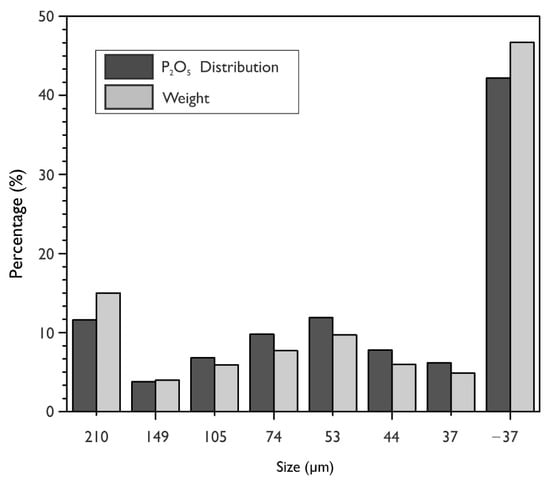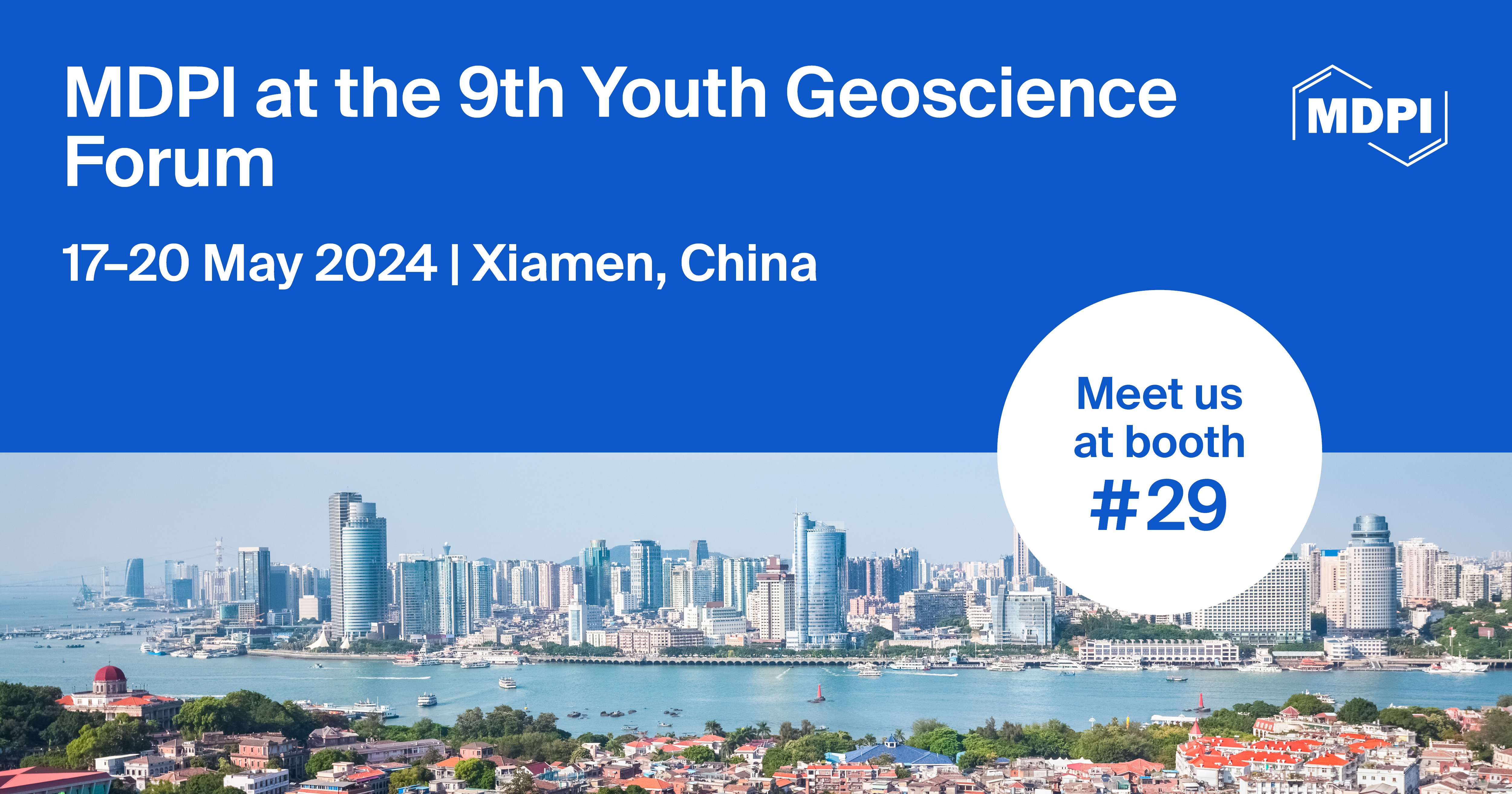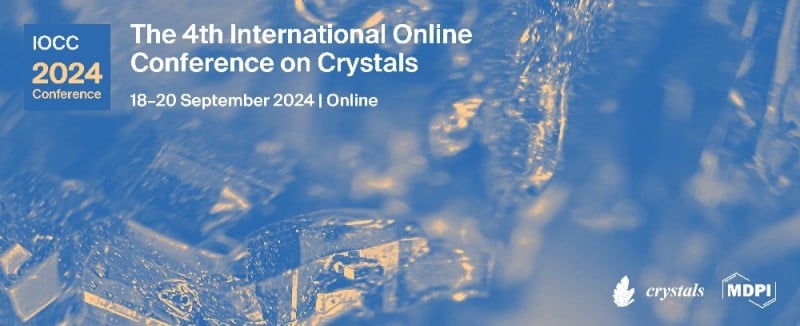-
 Interactions of Perrhenate (Re(VII)O4−) with Fe(II)-Bearing Minerals
Interactions of Perrhenate (Re(VII)O4−) with Fe(II)-Bearing Minerals -
 Mineral Chemistry of Olivine, Oxy-Spinel, and Clinopyroxene in Lavas and Xenoliths from the Canary, Azores, and Cape Verde Islands (Macaronesia, North Atlantic Ocean): New Data and Comparisons with the Literature
Mineral Chemistry of Olivine, Oxy-Spinel, and Clinopyroxene in Lavas and Xenoliths from the Canary, Azores, and Cape Verde Islands (Macaronesia, North Atlantic Ocean): New Data and Comparisons with the Literature -
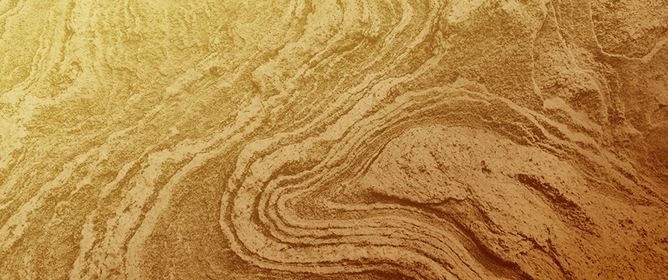 Early Triassic S-Type Granitoids in the Qinzhou Bay Area, South China: Petrogenesis and Tectonic Implications
Early Triassic S-Type Granitoids in the Qinzhou Bay Area, South China: Petrogenesis and Tectonic Implications -
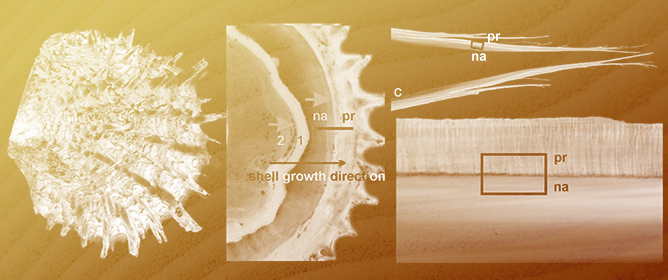 Evidence of a Scheduled End for Prism Growth in the Shell of Pinctada margaritifera: Closure of the Calcite Biomineralization Area by a Specific Organic Membrane
Evidence of a Scheduled End for Prism Growth in the Shell of Pinctada margaritifera: Closure of the Calcite Biomineralization Area by a Specific Organic Membrane -
 Zagamiite, CaAl2Si3.5O11, the Hexagonal High-Pressure CAS Phase with Dominant Si, as a Mineral from Mars
Zagamiite, CaAl2Si3.5O11, the Hexagonal High-Pressure CAS Phase with Dominant Si, as a Mineral from Mars
Journal Description
Minerals
Minerals
is an international, peer-reviewed, open access journal of natural mineral systems, mineral resources, mining, and mineral processing. Minerals is published monthly online by MDPI.
- Open Access— free for readers, with article processing charges (APC) paid by authors or their institutions.
- High Visibility: indexed within Scopus, SCIE (Web of Science), GeoRef, CaPlus / SciFinder, Inspec, Astrophysics Data System, AGRIS, and other databases.
- Journal Rank: JCR - Q2 (Mining & Mineral Processing) / CiteScore - Q2 (Geology)
- Rapid Publication: manuscripts are peer-reviewed and a first decision is provided to authors approximately 18.7 days after submission; acceptance to publication is undertaken in 2.6 days (median values for papers published in this journal in the second half of 2023).
- Recognition of Reviewers: reviewers who provide timely, thorough peer-review reports receive vouchers entitling them to a discount on the APC of their next publication in any MDPI journal, in appreciation of the work done.
- Companion journal: Mining
Impact Factor:
2.5 (2022);
5-Year Impact Factor:
2.7 (2022)
Latest Articles
Recovery of Apatite from Magnetic Concentration Tailings by Flotation
Minerals 2024, 14(5), 441; https://0-doi-org.brum.beds.ac.uk/10.3390/min14050441 (registering DOI) - 23 Apr 2024
Abstract
Iron concentration tailings contain many valuable minerals, including apatite, which is not currently being recovered despite its use to make fertilizers and chemicals. This article proposes a flotation circuit to recover apatite from tailings generated by mining in Chile, based on laboratory tests
[...] Read more.
Iron concentration tailings contain many valuable minerals, including apatite, which is not currently being recovered despite its use to make fertilizers and chemicals. This article proposes a flotation circuit to recover apatite from tailings generated by mining in Chile, based on laboratory tests and using the “Split Factor” method. The iron tailings were characterized by granulometry, chemical and mineralogical analyses, zeta potential, and contact angle. The effect of the collector, frother, and dispersant dose, along with the number of flotation stages, on both the grade and recovery of P2O5 were studied. The results indicate that it is possible to produce concentrates with a P2O5 grade of 29.1% and 89.6% recovery in a flotation circuit that includes the rougher–scavenger–cleaner stages. To obtain these results, it is only necessary to condition the iron tailings with 400 gt−1 of Atrac-2600, 400 gt−1 of sodium silicate, 10 min of conditioning time, pH adjustment to 10, and a time for the rougher, cleaner, and scavenger stages set at 10, 7.6, and 6.8 min, respectively. A chemical interaction is suggested, where the collector is specifically adsorbed onto the apatite surface.
Full article
(This article belongs to the Special Issue Reuse and Recycling of Phosphate Mine Wastes)
►
Show Figures
Open AccessEditorial
Editorial for Special Issue “Advances on Fine Particles and Bubbles Flotation”
by
Liuyi Ren
Minerals 2024, 14(5), 439; https://0-doi-org.brum.beds.ac.uk/10.3390/min14050439 (registering DOI) - 23 Apr 2024
Abstract
The froth-flotation process allows for the separation of solid particles according to differences in their physical and surface-chemistry properties [...]
Full article
(This article belongs to the Special Issue Advances on Fine Particles and Bubbles Flotation)
Open AccessArticle
Open-Pit Pushback Optimization by a Parallel Genetic Algorithm
by
Felipe Navarro, Nelson Morales, Carlos Contreras-Bolton, Carlos Rey and Victor Parada
Minerals 2024, 14(5), 438; https://0-doi-org.brum.beds.ac.uk/10.3390/min14050438 - 23 Apr 2024
Abstract
►▼
Show Figures
Determining the design of pushbacks in an open-pit mine is a key part of optimizing the economic value of the mining project and the operational feasibility of the mine. This problem requires balancing pushbacks that have good geometric properties to ensure the smooth
[...] Read more.
Determining the design of pushbacks in an open-pit mine is a key part of optimizing the economic value of the mining project and the operational feasibility of the mine. This problem requires balancing pushbacks that have good geometric properties to ensure the smooth operation of the mining equipment and so that the scheduling of extraction maximizes the economic value by providing early access to the rich parts of the deposit. However, because of the challenging nature of the problem, practical approaches for finding the best pushbacks strongly depend on the expert criteria to ensure good operational properties. This paper introduces the Advanced Geometrically Constrained Production Scheduling Problem to account for operational space constraints, modeled as truncated cones of extraction. To find the best solution for this problem, we present a parallel genetic algorithm based on a genotype–phenotype model such that the genotype symbolizes the base block of a truncated cone, and the phenotype represents the cone itself. A central computer node evaluates these solutions, collaborating with various secondary nodes that evolve a population of feasible solutions. The PGA’s efficacy was validated using comprehensive test instances from established research. The PGA solution exhibited a consistent average copper grade across periods, with its incremental phases reflecting real-world mine geometry. Moreover, the benefits of the MeanShift clustering technique were evident, suggesting effective phase-based scheduling. The PGA’s approach ensures optimal resource utilization and offers insights into potential avenues for further model enhancements and fine-tuning.
Full article

Figure 1
Open AccessArticle
Research on the Grinding Process of Superhard Particles in the Fluidized Bed Opposed Jet Mill Based on the CFD-DEM Methodology
by
Lingling Shen, Xiao Jiang, Xuedong Liu, Hongmei Liu, Siduo Song, Qiuge Han and Xu He
Minerals 2024, 14(4), 437; https://0-doi-org.brum.beds.ac.uk/10.3390/min14040437 - 22 Apr 2024
Abstract
►▼
Show Figures
The process of superhard particle breakage in the grinding zone of the fluidized bed opposed jet mill is investigated using the CFD-DEM (computational fluid dynamics-discrete element method) coupling method with the Tavares UFRJ Breakage Model in the present study. The effects of structural
[...] Read more.
The process of superhard particle breakage in the grinding zone of the fluidized bed opposed jet mill is investigated using the CFD-DEM (computational fluid dynamics-discrete element method) coupling method with the Tavares UFRJ Breakage Model in the present study. The effects of structural and operational parameters, such as target plate structure, nozzle position, air inlet velocity, and feed rate, on the equipment stress distribution, airflow velocity, pressure field, particle velocity, and cumulative particle size distribution are thoroughly studied to determine the optimal structural and operational parameters. Experimental validation is conducted, including scanning electron microscope (SEM) observation of particle morphology and analysis of particle size distribution of ground product particles. The simulation results indicate that the wear rate of the structure without a target plate is lower than that of the structure with a target plate in the grinding central zone. Therefore, the structure without a target plate is chosen for further investigation. The cumulative particle size distribution after grinding is influenced by nozzle position, air inlet velocity, and feed rate. The particle D50 is positively correlated with nozzle spacing and feed rate, while it is negatively correlated with air inlet velocity. The optimal grinding effect is achieved when the distance between the nozzle and the center of the grinding zone ranges from 52.5 mm to 72.55 mm, the air inlet velocity is 950 m/s, and the feed rate is 10.5 g/s. Through experimental investigation, it has been observed that when the feed rate is 10 g/s, the particle size distribution becomes more uniform. Furthermore, consistent trends in the cumulative particle size distribution in the experiment and simulation results can be found, which validates the present numerical model. It was observed that particles at low feed rates retain certain angular edges, while particle roundness increases at high feed rates.
Full article

Figure 1
Open AccessArticle
Simultaneous U–Pb and U–Th Dating Using LA-ICP-MS for Young (<0.4 Ma) Minerals: A Reappraisal of the Double Dating Approach
by
Hisatoshi Ito
Minerals 2024, 14(4), 436; https://0-doi-org.brum.beds.ac.uk/10.3390/min14040436 - 22 Apr 2024
Abstract
Simultaneous U–Pb and U–Th dating using laser ablation-inductively coupled plasma-mass spectrometry (LA-ICP-MS) was performed on the ca. 0.1 Ma Toya tephra and the ca. 0.08 Ma SS14-28 U–Th zircon reference material. In U–Pb dating, both Th/U and Pa/U partitioning between magma and minerals
[...] Read more.
Simultaneous U–Pb and U–Th dating using laser ablation-inductively coupled plasma-mass spectrometry (LA-ICP-MS) was performed on the ca. 0.1 Ma Toya tephra and the ca. 0.08 Ma SS14-28 U–Th zircon reference material. In U–Pb dating, both Th/U and Pa/U partitioning between magma and minerals were considered. In U–Th dating, both abundance sensitivity and molecular interferences on 230Th were reevaluated. As a result, the Toya tephra yielded an accurate weighted mean U–Pb age of 0.103 ± 0.029 Ma (2σ) using zircon and monazite. Conversely, the SS14-28 zircon yielded an inaccurate U–Pb age (0.25 ± 0.10 Ma), which was attributed to low 206Pb signal intensity. Both the Toya tephra zircon and the SS14-28 zircon yielded accurate U–Th model ages of 0.108 ± 0.014 Ma and 0.078 ± 0.007 Ma, respectively. The agreement of U–Pb and U–Th ages for Toya indicates that simultaneous U–Pb and U–Th dating is possible and viable. The inappropriate age of SS14-28 U–Pb age and appropriate U–Th model age also indicates it is preferable to apply both U–Pb and U–Th dating simultaneously for young (<0.4 Ma) zircons to check internal consistency. The proposed double dating approach may be especially useful for small grains when it otherwise would be impossible to obtain multiple ages from a single grain. By adopting simultaneous U–Pb and U–Th dating using LA-ICP-MS, zircon crystallization ages as old as 4.5 Ga to as young as 0.1 Ma (or even younger) can be obtained in a quick and cost-effective manner with a reasonable (~5% at 1σ) uncertainty.
Full article
(This article belongs to the Section Mineral Geochemistry and Geochronology)
►▼
Show Figures
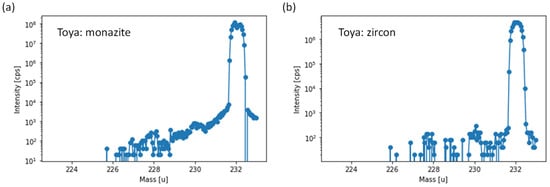
Figure 1
Open AccessArticle
Genesis of the Mahour Base Metal Deposit, Iran: Constraints from Fluid Inclusions and Sulfur Isotopes
by
Zahra Moradiani, Majid Ghaderi, Hossein-Ali Tajeddin and Pura Alfonso
Minerals 2024, 14(4), 435; https://0-doi-org.brum.beds.ac.uk/10.3390/min14040435 - 22 Apr 2024
Abstract
The Mahour base metal deposit is located northeast of Badroud in the middle of the Urumieh–Dokhtar magmatic arc in the Isfahan province of Iran. The main host rocks to the ores are Eocene volcanic and volcaniclastic rocks. Hypogene ore minerals constituting the main
[...] Read more.
The Mahour base metal deposit is located northeast of Badroud in the middle of the Urumieh–Dokhtar magmatic arc in the Isfahan province of Iran. The main host rocks to the ores are Eocene volcanic and volcaniclastic rocks. Hypogene ore minerals constituting the main ore body are galena, sphalerite, pyrite, and chalcopyrite. In addition to gangue quartz, a variety of supergene minerals comprising gypsum, goethite, hematite, “limonite”, malachite, azurite, covellite, and chalcocite are also present; gangue minerals are quartz, barite, calcite, sericite, and chlorite. Silicification, intermediate argillic, and propylitic are the main wall-rock alteration types. The presence of fluid inclusions with different vapor/liquid ratios in quartz and sphalerite could indicate a boiling process. The primary liquid-rich fluid inclusions suggest that the homogenization temperature was between 107 and 298 °C from fluids with salinities from 1.5 to 13.7 wt.% NaCl equiv. These data suggest that the ore-forming fluids were magmatic with a contribution from meteoric waters. The δ34S values of sulfides range from 1.9 to 3.4‰, those of barite range from 12.1 to 13.2‰, and those of gypsum range from 4.3 to 5.6‰. These data suggest that sulfur was mostly of magmatic origin with a minor contribution from sedimentary rocks. Our data suggest that the boiling of fluids formed an intermediate-sulfidation style of epithermal mineralization for the Mahour deposit.
Full article
(This article belongs to the Special Issue New Insights into Porphyry, Epithermal, and Skarn Deposits)
►▼
Show Figures
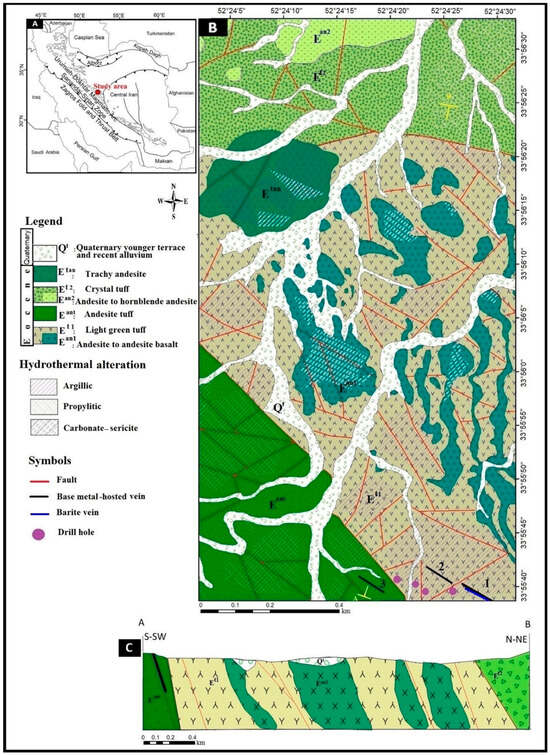
Figure 1
Open AccessArticle
An Automated Approach to the Heterogeneity Test for Sampling Protocol Optimization
by
Gabriela Cardoso Prado, Ana Carolina Chieregati and Simon C. Dominy
Minerals 2024, 14(4), 434; https://0-doi-org.brum.beds.ac.uk/10.3390/min14040434 - 22 Apr 2024
Abstract
The fundamental sampling error is one of the sampling errors defined by Pierre Gy’s Theory of Sampling and is related to the constitution heterogeneity of the mineralisation. Even if a sampling procedure is considered ideal or perfect, this error will still exist and,
[...] Read more.
The fundamental sampling error is one of the sampling errors defined by Pierre Gy’s Theory of Sampling and is related to the constitution heterogeneity of the mineralisation. Even if a sampling procedure is considered ideal or perfect, this error will still exist and, therefore, cannot be eliminated. A key input into Gy’s fundamental sampling error equation is intrinsic heterogeneity. The intrinsic heterogeneity of a fragmented lot can be estimated by the “calibrated” formula of Gy, which can be written as a function of the sampling constants K and α. These constants can be calibrated by the standard heterogeneity test, originally developed by Pierre Gy and Francis Pitard. This method is based on the selection of rock fragments, individually and randomly, in an equiprobabilistic way from a lot of particulate material, aiming to estimate the intrinsic heterogeneity of the lot. This test, in addition to demanding time and space, can be influenced by human biases, and is difficult to quantify or measure. Aiming to simplify the test execution and eliminate the variance generated by human biases, a prototype called the intrinsic heterogeneity tester was developed as an automated alternative for heterogeneity testing. This prototype selects fragments from a falling stream, one by one, by means of a predefined laser count. To evaluate the prototype, a study was carried out, using painted chickpeas to simulate mineralisation grades and, sequentially, processing the same lot in the intrinsic heterogeneity tester prototype several times. The statistical and mineral content analysis, and comparisons between the intrinsic heterogeneity tester and the standard heterogeneity test sampling constants and constitution heterogeneities were undertaken. As a result, the authors conclude that the intrinsic heterogeneity tester prototype can be used as an alternative to the manual selection of individual fragments and for estimating the intrinsic heterogeneity of particulate material lots to support sampling protocol optimization.
Full article
(This article belongs to the Section Mineral Processing and Extractive Metallurgy)
►▼
Show Figures
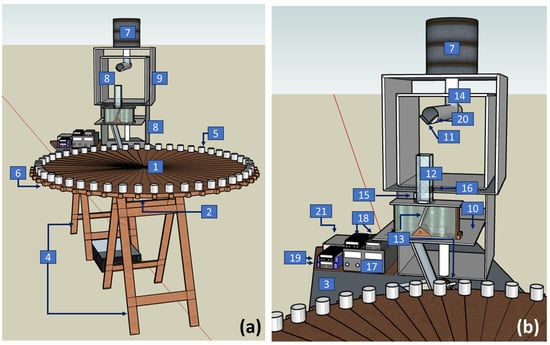
Figure 1
Open AccessArticle
Mechanical Characteristics and Macro–Microscopic Response Mechanisms of Cemented Paste Backfill under Different Curing Temperatures
by
Chao Zhang, Abbas Taheri, Cuifeng Du, Wenhao Xia and Yuye Tan
Minerals 2024, 14(4), 433; https://0-doi-org.brum.beds.ac.uk/10.3390/min14040433 - 22 Apr 2024
Abstract
Macroscopic and microscopic properties of cemented paste backfill (CPB) were studied through uniaxial compressive testing, acoustic emission (AE) monitoring, and microscopic feature analysis. The research shows that the uniaxial compressive strength (UCS) and elastic modulus have an exponential function type positive correlation with
[...] Read more.
Macroscopic and microscopic properties of cemented paste backfill (CPB) were studied through uniaxial compressive testing, acoustic emission (AE) monitoring, and microscopic feature analysis. The research shows that the uniaxial compressive strength (UCS) and elastic modulus have an exponential function type positive correlation with the increase in curing time and a polynomial function type with the rise of curing temperature; the mechanical parameters reach the maximum when the curing temperature is 40 °C. Increasing the curing time and curing temperature can promote the transition from shear crack to tensile crack. Increasing the curing time and raising the curing temperature both promote the transition of shear crack to tensile crack in the CPB. Overall, the crack mode is a combination of tensile and shear crack. At room temperature, the shear cracks dominates in the initial stage, but the proportion of the shear cracks decreases as the pressure increases in uniaxial compression test. At a curing temperature of 60 °C, the crack mode transitions to a tensile-shear mixed crack, with tension becoming the dominant crack mode. Microscopic analysis suggests an excellent linear correlation between the pore fractal dimension, UCS, and elastic modulus. When the pore fractal dimension decreases, the mechanical parameters also decrease. The pore fractal dimension can effectively characterize the macroscopic mechanical properties. Finally, the curing temperature is divided into two stages, with 40 °C as the dividing line for analysis. In the first stage, the increase in curing temperature effectively improved the mechanical parameters; in the second stage, the excessively high hydration reaction rate weakened the mechanical parameters.
Full article
(This article belongs to the Special Issue Backfilling Materials for Underground Mining, Volume III)
►▼
Show Figures
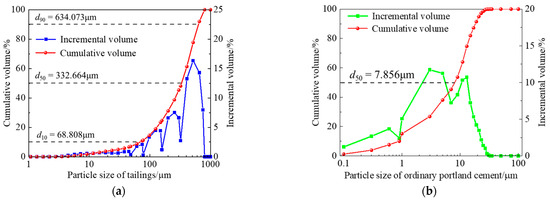
Figure 1
Open AccessArticle
A New Nephrite Occurrence in Jiangxi Province, China: Its Characterization and Gemological Significance
by
Xin Wei, Guanghai Shi, Xiaochong Zhang, Jiajing Zhang and Meiyu Shih
Minerals 2024, 14(4), 432; https://0-doi-org.brum.beds.ac.uk/10.3390/min14040432 - 21 Apr 2024
Abstract
Nephrite is a very precious gemstone material. As a non-renewable resource, the discovery of new nephrite deposits and the study of the genesis of nephrite have aroused great interest. A new occurrence of nephrite known as Xinyu nephrite was discovered in Xinyu Country,
[...] Read more.
Nephrite is a very precious gemstone material. As a non-renewable resource, the discovery of new nephrite deposits and the study of the genesis of nephrite have aroused great interest. A new occurrence of nephrite known as Xinyu nephrite was discovered in Xinyu Country, Jiangxi province, China. Field investigations reveal that nephrite appears in a contact zone between the Mengshan composite granitic pluton and Permian carbonate rock. The carbonate rock is calcic marble that underwent diopsidization and tremolitization. Nephrites have a light yellow-green color, weak greasy luster, are slightly-translucent to translucent, and are fine-grained. Their refractive index (RI) ranges from 1.60 to 1.61, and their specific gravity (SG) value ranges from 2.90 to 2.91, falling within the range of nephrites from Xinjiang, China. Their Mohs hardness (Hm) ranges from 5.78 to 5.83. Petrographic observations and electron probe micro analyzer (EPMA) data indicated that analyzed nephrites mainly comprise tremolite, with minor diopside, calcite, quartz, and apatite. Tremolite has a ratio of Mg/(Mg + Fe2+) greater than 0.99. The tremolite grains show microscopic fibrous-felted and columnar textures. Scanning electron microscope (SEM) images show some tremolite fibers interwoven in different crystallographic orientations, and some arranged in parallel. Fourier transform infrared and Raman spectroscopy features reveal the bands of minerals typical for nephrite composition. The petrographic characteristics and geological background of the Mengshan area indicate that nephrite formed through a replacement of calcic marble, which differs from the two known types (D-type: dolomite-related; S-type: serpentinite-related). Mineral replacements were common in nephrite, including diopside by tremolite, calcite by tremolite, and recrystallization of coarse by fine tremolite grains. The discovery of Xinyu nephrite occurrence complements the resource and provides an updated case for the in-depth study of the diversity of nephrite deposits.
Full article
(This article belongs to the Section Mineral Deposits)
►▼
Show Figures
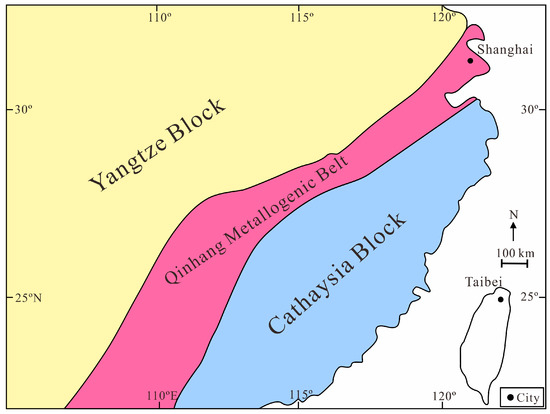
Figure 1
Open AccessArticle
Geological and Crystallochemical Characterization of the Margaritasite–Carnotite Mineral from the Uranium Region of Peña Blanca, Chihuahua, Mexico
by
Fabián G. Faudoa-Gómez, Luis E. Fuentes-Cobas, Hilda E. Esparza-Ponce, Jesús G. Canche-Tello, Ignacio A. Reyes-Cortés, Maria E. Fuentes-Montero, Diane M. Eichert, Yair Rodríguez-Guerra and Maria-Elena Montero-Cabrera
Minerals 2024, 14(4), 431; https://0-doi-org.brum.beds.ac.uk/10.3390/min14040431 - 21 Apr 2024
Abstract
Margaritasite is a mineral compound discovered in the early 1980s in Chihuahua, Mexico. It is a natural cesium uranyl vanadate found only, so far, in the Margaritas mine of the Peña Blanca highlands. In this work, a thorough characterization of the aforementioned mineral
[...] Read more.
Margaritasite is a mineral compound discovered in the early 1980s in Chihuahua, Mexico. It is a natural cesium uranyl vanadate found only, so far, in the Margaritas mine of the Peña Blanca highlands. In this work, a thorough characterization of the aforementioned mineral is presented. The portfolio of the techniques employed includes high-resolution X-ray diffraction, scanning electron microscopy with energy dispersive X-ray spectroscopy, transmission electron microscopy in selected area electron diffraction (SAED) mode, and X-ray absorption spectroscopy (XAS). After extensive data analysis and modeling, new information on the mineral has been retrieved. Its phase composition is margaritasite–carnotite: a solid solution of cesium and potassium uranyl vanadate [(Cs,K)2(UO2)2(VO4)2·nH2O], and margaritasite, which is practically pure cesium uranyl vanadate [Cs2(UO2)2(VO4)2·nH2O]. The crystal structure of both components presents the space group P 1 21/c 1. Yet, each phase has similar, but appreciably different, lattice parameters. The mineral has a lamellar tabular and prismatic morphology. SAED patterns confirm the crystal structure of margaritasite. XAS spectra of Cs, V, and U confirm the elemental composition, oxidation states, and interatomic distances of this structure. These findings are consistent with the presence of cesium in this unique mineral from the paragenesis point of view.
Full article
(This article belongs to the Section Crystallography and Physical Chemistry of Minerals & Nanominerals)
►▼
Show Figures
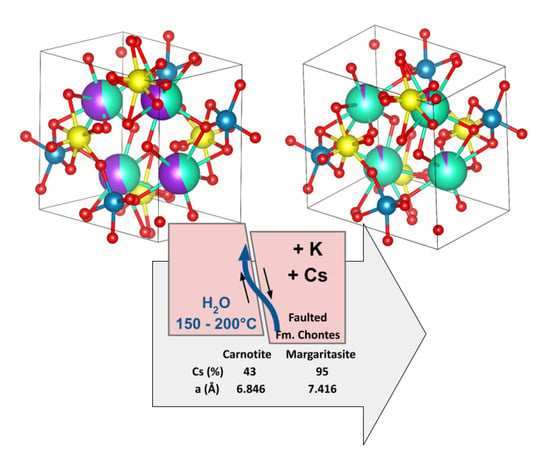
Graphical abstract
Open AccessArticle
Swelling Stress of Bentonite: Thermodynamics of Interlayer Water in K-Montmorillonite in Consideration of Alteration
by
Misato Endo and Haruo Sato
Minerals 2024, 14(4), 430; https://0-doi-org.brum.beds.ac.uk/10.3390/min14040430 - 21 Apr 2024
Abstract
The buffer material that makes up the geological disposal system of high-level waste swells by contact with groundwater and seals space with rock mass and fractures in rock mass. The buffer material has a function of mechanical buffer with rock pressure, and swelling
[...] Read more.
The buffer material that makes up the geological disposal system of high-level waste swells by contact with groundwater and seals space with rock mass and fractures in rock mass. The buffer material has a function of mechanical buffer with rock pressure, and swelling stress is important in this case. The alteration of bentonite may occur due to the initial replacement of cations (Na+ ions) in the interlayer with K+ ions upon contact with groundwater, but there are no studies on the swelling stress of K-bentonite. In this study, the author prepared K-montmorillonite samples and obtained thermodynamic data on interlayer water as a function of water content using a relative humidity method. The swelling stress was analyzed based on a thermodynamic model developed in earlier studies and compared with measured data. The activity and the relative partial molar Gibbs free energy of porewater decreased with decreasing water content in the region, below approximately 15%. This behavior significantly differs from that of other ions, such as Na. The swelling stress calculated based on the thermodynamic model and date occurred in the region of high density of 1.9 Mg/m3 with montmorillonite partial density. It was indicated for the first time that K-bentonite scarcely swells under realistic design conditions.
Full article
(This article belongs to the Special Issue Environmental Mineralogy, 2nd Edition)
►▼
Show Figures

Figure 1
Open AccessArticle
Identification of the Sedimentary Sources and Origin of Uranium for Zhiluo Formation of the Tarangaole U Deposit, Northeastern Ordos Basin
by
Guang-Yao Li, Chun-Ji Xue, Qiang Zhu, Jian-Wen Yang and Xiao-Bo Zhao
Minerals 2024, 14(4), 429; https://0-doi-org.brum.beds.ac.uk/10.3390/min14040429 (registering DOI) - 20 Apr 2024
Abstract
The large-sized Tarangaole uranium deposit and its neighboring Daying and Nalinggou deposits, located in the northeastern margin of the Ordos Basin, constitutes a major uranium resource base in northern China. In order to further clarify the sedimentary material source, uranium source and regional
[...] Read more.
The large-sized Tarangaole uranium deposit and its neighboring Daying and Nalinggou deposits, located in the northeastern margin of the Ordos Basin, constitutes a major uranium resource base in northern China. In order to further clarify the sedimentary material source, uranium source and regional sediment–tectonic setting of the uranium-fed clastic rocks (i.e., Zhiluo Formation(J2z)) in the district, this paper carried out whole-rock geochemistry, heavy minerals composition and in situ U-Pb dating of detrital zircons for sandstones from the lower section of the Zhiluo Formation. The results have shown that the average chemical differentiation index (CIA) for the host rocks is 73.16 and the chemical weathering degree is moderate. Heavy minerals are mainly composed of ilmenite, garnet, chlorpyrite, zircon, pyrite, apatite, hematite, etc. The U-Pb dating of detrital zircon generally indicates three age peaks, i.e., 260~Ma, 1850~Ma and 2450~Ma, respectively. In conclusion, the source rocks may have been formed at active continental margins, e.g., in a continental margin arc environment. The sedimentary materials mainly come from khondalite series, TTGs, granulite, and mafic–ultramafic intrusive rocks distributed among the Daqing–Ula Mountains and adjacent areas, etc. The Late Paleozoic U-rich intermediate and acidic magmatic rocks spreading over the eastern part of the Ula–Daqing and Wolf mountains have provided the main uranium sources for the formation of major U deposits in the northern Ordos Basin.
Full article
(This article belongs to the Section Mineral Deposits)
►▼
Show Figures
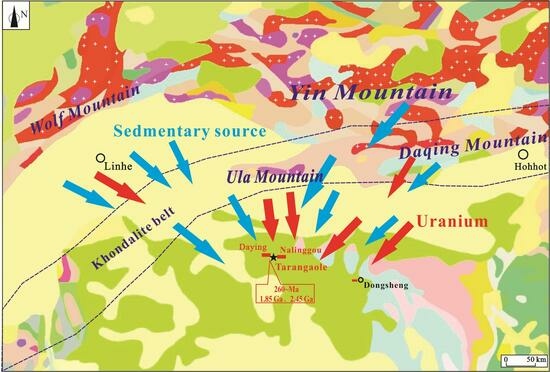
Graphical abstract
Open AccessArticle
Reduction in Apparent Permeability Owing to Surface Precipitation of Solutes by Drying Process and Its Effect on Geological Disposal
by
Tsugumi Seki, Kanta Hongo, Taiji Chida and Yuichi Niibori
Minerals 2024, 14(4), 428; https://0-doi-org.brum.beds.ac.uk/10.3390/min14040428 - 20 Apr 2024
Abstract
Disposal tunnels in geological repositories are ventilated continuously for over 50 years until their closure. Under these conditions, an unsaturated zone of mixed liquid and gas phases forms around the tunnels. Moreover, drying is assumed to progress from the host rock to the
[...] Read more.
Disposal tunnels in geological repositories are ventilated continuously for over 50 years until their closure. Under these conditions, an unsaturated zone of mixed liquid and gas phases forms around the tunnels. Moreover, drying is assumed to progress from the host rock to the tunnels. To understand these drying processes, this study investigated the migration and precipitation of solutes via capillary forces during drying in packed columns using silica sand or glass beads as packed layers and X-ray CT analysis. In addition, the apparent permeability of a column packed with silica sand containing precipitation was examined using a flow experiment. The results indicate that the precipitation and accumulation of solutes were significant near the drying surfaces of the columns. The apparent mass transfer coefficient at a relatively early stage of the drying process indicates that the migration rate of solutes depends strongly on the capillary forces during the drying process. Furthermore, the apparent permeability of the columns with precipitation decreased significantly. These indicate that the precipitation and accumulation of solutes with drying in the groundwater reduce the porosity and permeability, and the advection of groundwater around the repository may be suppressed.
Full article
(This article belongs to the Section Environmental Mineralogy and Biogeochemistry)
►▼
Show Figures
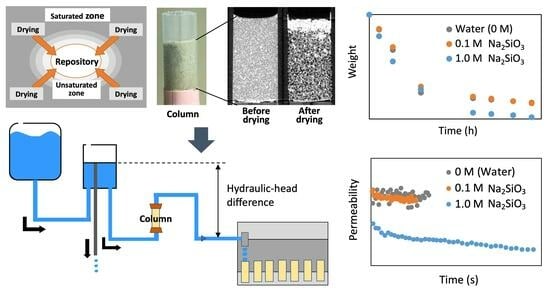
Graphical abstract
Open AccessReview
Indirect Freeze Crystallization—An Emerging Technology for Valuable Resource Recovery from Wastewater
by
Kagiso S. More and Mlungisi Mahlangu
Minerals 2024, 14(4), 427; https://0-doi-org.brum.beds.ac.uk/10.3390/min14040427 - 20 Apr 2024
Abstract
This paper explores the efficiency and potential of indirect freeze crystallization (IFC) as a valuable resource-recovery technology in wastewater treatment, particularly focusing on acid mine water and hazardous material wastewater-treatment plants. Wastewater treatment poses challenges to recovering valuable resources effectively, enforcing the need
[...] Read more.
This paper explores the efficiency and potential of indirect freeze crystallization (IFC) as a valuable resource-recovery technology in wastewater treatment, particularly focusing on acid mine water and hazardous material wastewater-treatment plants. Wastewater treatment poses challenges to recovering valuable resources effectively, enforcing the need for sustainable and resource-efficient technologies like freeze crystallization. Through a thorough examination of IFC principles and mechanisms, this paper aims to highlight its applications, advantages, and limitations. The investigation includes a comprehensive literature review and detailed methodology from one of the IFC pilot plants, as well as a critical analysis of the environmental and economic implications of IFC. By addressing scaling challenges in reverse osmosis and proposing an environmentally friendly brine disposal method through IFC, this paper contributes to reducing the environmental footprint associated with wastewater treatment. Additionally, this paper highlights the importance of extracting valuable resources from highly saline water and emphasises the potential economic and environmental benefits of resource recovery, particularly focusing on the promising technology of IFC.
Full article
(This article belongs to the Special Issue Acid Mine Drainage: A Challenge or an Opportunity?)
Open AccessArticle
Cultivation of Microalgae (Scenedesmus sp.) Using Coal Mining Wastewater and Separation via Coagulation/Flocculation and Dissolved Air Flotation (DAF)
by
Marcio Alexandre Nicknig, André Camargo de Azevedo, Henrique Alberton de Oliveira and Ivo André Homrich Schneider
Minerals 2024, 14(4), 426; https://0-doi-org.brum.beds.ac.uk/10.3390/min14040426 - 20 Apr 2024
Abstract
Algae growth can be carried out in treated mine waters, providing biomass and helping to achieve the standards for water discharge. However, efficient separation of algae from the aqueous medium is crucial. The present work investigated the stability of Scenedesmus sp. in treated
[...] Read more.
Algae growth can be carried out in treated mine waters, providing biomass and helping to achieve the standards for water discharge. However, efficient separation of algae from the aqueous medium is crucial. The present work investigated the stability of Scenedesmus sp. in treated acid drainage from coal mining and assessed the harvesting of microalgae via coagulation/flocculation and dissolved air flotation (DAF). Successful algae growth was achieved, with cells remaining suspended in the water at a wide range of pH values, requiring the use of reagents for destabilization/aggregation. Algae coagulation/flocculation was attained with the use of tannin or ferric chloride associated with an anionic polymer flocculant at a pH of 8.0 ± 0.1. When combined with the flocculant, both tannin and the inorganic coagulant proved effective in enhancing floc stability and hydrophobicity for the DAF process. In summary, this operational approach facilitated algae biomass recovery and significantly reduced turbidity in the treated water. Finally, a schematic diagram illustrating the algae cultivation and harvesting process is presented, offering a practical alternative to acid mine drainage (AMD) treatment refinement associated with algae biomass production.
Full article
(This article belongs to the Special Issue Characterization and Management of Mine Waters)
►▼
Show Figures
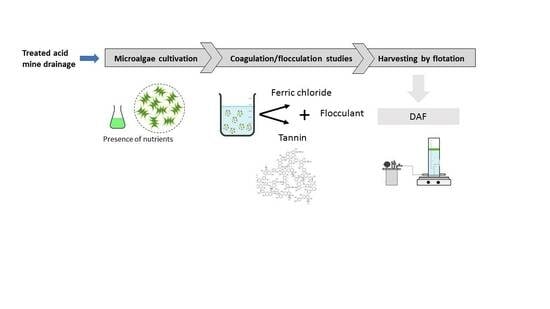
Graphical abstract
Open AccessArticle
The Influences of O2 Availability on the Microbial Activities and Fe Transformations in the Iron Formation Caves of the Southern Espinhaço Range, Brazil
by
Melissa K. Mulford, Anela Mukherjee, Augusto S. Auler, Hazel A. Barton and John M. Senko
Minerals 2024, 14(4), 425; https://0-doi-org.brum.beds.ac.uk/10.3390/min14040425 - 20 Apr 2024
Abstract
Over 3000 iron formation caves (IFCs) have formed in erosion-resistant Fe(III)-rich rocks throughout Brazil. Microbial Fe(III) reduction occurs in IFCs, where a microbe-rich, Fe(III)-depleted paste (sub muros) is found behind an Fe(III)-(hydr)oxide crust in the ceiling/walls. Microbial Fe(III) reduction in sub
[...] Read more.
Over 3000 iron formation caves (IFCs) have formed in erosion-resistant Fe(III)-rich rocks throughout Brazil. Microbial Fe(III) reduction occurs in IFCs, where a microbe-rich, Fe(III)-depleted paste (sub muros) is found behind an Fe(III)-(hydr)oxide crust in the ceiling/walls. Microbial Fe(III) reduction in sub muros appears to be responsible for the transformation of Fe(III) to more soluble Fe(II), which is removed, leading to cave formation. This process of biospeleogenesis is likely controlled by O2 availability, which is linked to seasonal changes. Here, we studied the effects of alternating anoxia/oxia on the microbial community and on Fe solubility in banded iron formation (BIF), a rock type consisting of layered Fe(III)-oxide and silicate. Incubations of synthetic pore water, pulverized BIF, and sub muros were prepared and incubated under anoxia, during which BIF-Fe(III) reduction proceeded. During the Fe(III) reduction period, Firmicutes and/or Alphaproteobacteria were enriched, and genes involved in Fe(III) and sulfate reduction were detected in the metagenomes. Fe(II) oxidation genes, which were detected in the fresh sub muros, were not found. Upon the addition of atmospheric O2, Fe(III) reduction was arrested, and incomplete Fe(II) oxidation occurred. Betaproteobacteria, Gammaproteobacteria, and Chloroflexi increased in relative abundance following aeration, and Fe(III) reduction genes were still identified. Our results demonstrate that the sub muros microbial community retains the ability to reduce Fe(III) and drive speleogenesis despite fluctuations in O2 levels.
Full article
(This article belongs to the Section Biomineralization and Biominerals)
►▼
Show Figures
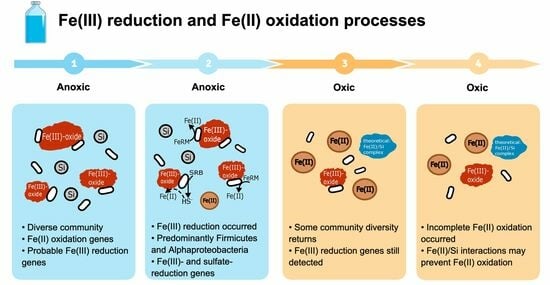
Graphical abstract
Open AccessArticle
Application of Stacking Ensemble Learning in Predicting Copper’s Flotation Concentrate Grade
by
Chengzhe Yin and Leming Ou
Minerals 2024, 14(4), 424; https://0-doi-org.brum.beds.ac.uk/10.3390/min14040424 - 19 Apr 2024
Abstract
Addressing issues such as a low operational condition recognition efficiency, strong subjectivity, and significant fluctuations in Outotec X fluorescence analysis data in copper flotation production, a copper concentrate grade classification model is constructed based on image processing technology and the Stacking ensemble learning
[...] Read more.
Addressing issues such as a low operational condition recognition efficiency, strong subjectivity, and significant fluctuations in Outotec X fluorescence analysis data in copper flotation production, a copper concentrate grade classification model is constructed based on image processing technology and the Stacking ensemble learning algorithm. Firstly, a feature extraction model for copper concentration flotation foam images is established, extracting color, texture, and size statistical features to build a feature dataset. Secondly, to avoid redundancy in the feature data, which could reduce model accuracy, a combined correlation feature selection is employed for dimensionality reduction, with the filtered feature subset being used as the model input. Finally, to fully leverage the strengths of each model, a Stacking ensemble learning copper concentrate grade classification model is constructed with support vector machine (SVM), random forest (RF), and adaptive boosting (AdaBoost) as base models and logistic regression (LR) as the meta-model. The experimental results show that this ensemble model achieves good recognition for different grade categories, with a precision, recall, and F1 score of 90.01%, 89.85%, and 89.93%, respectively. The accuracy of this Stacking ensemble model, with a 7% improvement over Outotec X fluorescence analysis, demonstrates a potential to meet the daily production needs of beneficiation plants.
Full article
(This article belongs to the Section Mineral Processing and Extractive Metallurgy)
►▼
Show Figures
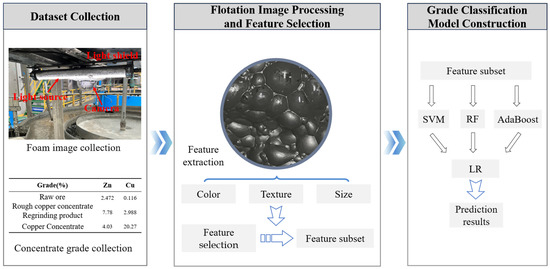
Figure 1
Open AccessArticle
Geodynamic Settings of Late Paleozoic–Early Mesozoic Granitoid Magmatism at the Arctic Continental Margins: Insights from New Geochronological and Geochemical Data from the Taimyr Peninsula
by
Mikhail Yu. Kurapov, Dmitry L. Konopelko, Yuriy S. Biske, Vasiliy F. Proskurnin, Sergei V. Petrov, Maria A. Proskurnina, Yevgeny Yi. Berzon, Victoria B. Ershova, Stepan V. Berzin and Sergey Yu. Stepanov
Minerals 2024, 14(4), 423; https://0-doi-org.brum.beds.ac.uk/10.3390/min14040423 - 19 Apr 2024
Abstract
Despite significant progress in Arctic geological studies, a number of principal questions concerning the Paleozoic collisional events remain unanswered. Therefore, the Taimyr Peninsula, representing the only outcropped high Arctic region where magmatic complexes, formed by Hercynian collision between the Siberian Craton and the
[...] Read more.
Despite significant progress in Arctic geological studies, a number of principal questions concerning the Paleozoic collisional events remain unanswered. Therefore, the Taimyr Peninsula, representing the only outcropped high Arctic region where magmatic complexes, formed by Hercynian collision between the Siberian Craton and the Kara Block, are well exposed, is crucially important. In this paper we report new geochemical and geochronological data for intrusions in the poorly studied northeastern part of the Taimyr Peninsula. The obtained results in combination with published data show that supra-subduction magmatism at the southern active margin of the Kara Block continued from ca. 345 to 285 Ma (Early Carboniferous to Early Permian), and was followed by a post-collisional magmatic pulse that affected the whole Taimyr across terrane boundaries at ca. 280 Ma in the Early Permian. After cessation of the post-collisional magmatism at ca. 265 Ma, the Taimyr experienced extension, and voluminous magmatic series associated with a Siberian mantle plume were formed between 251 and 228 Ma during the Triassic. The studied post-collisional and plume-related intrusions of the Northeastern Taimyr are generally classified as evolved high-K I-type granites with adakitic affinity. The latter is a regional feature because the majority of the analyzed plume-related granitoids are geochemically similar to high potassium continental adakites. It is suggested that the adakitic geochemical characteristics of the plume-related granitoids resulted from melting of hydrated mafic lower crustal protoliths and were controlled by the source lithology. Comparison of the new results with data available for adjacent areas allows for correlation of terranes on a regional scale and sheds light on the evolution of the Arctic continental margins in general. In the Early–Middle Paleozoic, the Kara Block was part of a continental terrane that formed at the northern edge of Baltica as a result of Neoproterozoic Timanian orogeny. In the Early Carboniferous, the southern margin of Kara turned into an active margin, while its inferred continuation in the eastern Uralian margin of Baltica remained a passive margin until the Early Permian. This discrepancy can be explained by dextral displacement of Kara relative to Baltica that took place in the Early Carboniferous and was later accommodated by the formation of the Taimyr collisional belt in the course of the Early Permian collision between Kara and Siberia. After collision, the Taimyr was incorporated into the northern Eurasian margin as an uplifted block that experienced surface erosion and supplied clastic material in surrounding basins.
Full article
(This article belongs to the Special Issue Petrogenesis, Geochronology, Mineralization and Geochemistry of Granite Rocks)
►▼
Show Figures

Figure 1
Open AccessArticle
Conditions and Mechanism of Crystallization of Hydrous W-Fe Oxides with a Pyrochlore-Type of Structure (Elsmoreite Group) in the Oxidation Zone of Ore Deposits
by
Mihail Tarassov and Eugenia Tarassova
Minerals 2024, 14(4), 422; https://0-doi-org.brum.beds.ac.uk/10.3390/min14040422 - 19 Apr 2024
Abstract
The purpose of the article is to elucidate the conditions and mechanism of crystallization of W-Fe oxide minerals with a pyrochlore-type structure (formerly ferritungstite, now elsmoreite group minerals) based on (1) a study of representative samples of secondary tungsten minerals from the oxidation
[...] Read more.
The purpose of the article is to elucidate the conditions and mechanism of crystallization of W-Fe oxide minerals with a pyrochlore-type structure (formerly ferritungstite, now elsmoreite group minerals) based on (1) a study of representative samples of secondary tungsten minerals from the oxidation zone of the Grantcharitsa tungsten deposit (Bulgaria) and (2) laboratory experiments under conditions suggested by the study of natural samples. It has been shown that crystallization of W-Fe pyrochlores occurs easily and effectively when treating WO3·xFe2O3·nH2O compounds (meymacite and tungstite) with W-Fe-containing solutions with pH 2.5–6.5 (70 °C); at the same time, direct crystallization (direct low-temperature hydrothermal synthesis) of these phases from aqueous solutions is unlikely. The crystallization of W-Fe pyrochlores under natural and laboratory conditions occurs through the oriented attachment of their nanocrystals to the {111} faces of growing crystals. The nucleation of such nanocrystals occurs in the bulk of the solution as a result of the interaction of the W-Fe solution with the W-(Fe) oxide hydrate precursor. The Fe/W ratio in the resulting W-Fe pyrochlore phase depends on the Fe/W ratio in the solution and precursor, as well as on the pH of the solution.
Full article
(This article belongs to the Special Issue Mineral Evolution and Mineralization during Weathering)
►▼
Show Figures
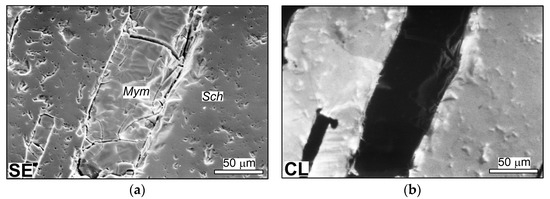
Figure 1
Open AccessArticle
Numerical Simulation Analysis of Control Factors on Acoustic Velocity in Carbonate Reservoirs
by
Jiahuan He, Wei Zhang, Dan Zhao, Nong Li, Qiang Kang, Kunpeng Cai, Li Wang, Xin Yao, Guanqun Wang, Bi’an Dong, Wei Li, Hongbin Chen and Wei Long
Minerals 2024, 14(4), 421; https://0-doi-org.brum.beds.ac.uk/10.3390/min14040421 - 19 Apr 2024
Abstract
The conventional Archie formula struggles with the interpretation of water saturation from resistivity well log data due to the increasing complexity of exploration targets. This challenge has prompted researchers to explore alternative physical parameters, such as acoustic characteristics, for breakthroughs. Clarifying the influencing
[...] Read more.
The conventional Archie formula struggles with the interpretation of water saturation from resistivity well log data due to the increasing complexity of exploration targets. This challenge has prompted researchers to explore alternative physical parameters, such as acoustic characteristics, for breakthroughs. Clarifying the influencing factors of porous media acoustic characteristics is one of the most important approaches to help understanding the mechanism of acoustic characteristics of carbonate reservoirs. The article uses digital rock technology to characterize the pore structure, quantitatively identify fractures and pore structures in carbonate rocks, and establish digital models. Through conventional acoustic testing, the pressure wave (P-wave) and shear wave (S-wave) velocities of rock samples at different water saturations are obtained, and the dynamic elastic modulus is calculated. A finite element calculation model is established using the digital rock computational model to provide a basis for fluid saturation calculation methods. Based on real digital rock models, different combinations of virtual fractures are constructed, and factors affecting acoustic parameters are analyzed. The study finds that as porosity increases, the velocity difference between porous cores and fractured cores also increases. These findings provide important technical support and a theoretical basis for interpreting acoustic well logging data and evaluating carbonate reservoirs with different pore and fracture types.
Full article
(This article belongs to the Topic New Trends in Rock Materials Mechanics and Engineering Geology)
►▼
Show Figures

Figure 1

Journal Menu
► ▼ Journal Menu-
- Minerals Home
- Aims & Scope
- Editorial Board
- Reviewer Board
- Topical Advisory Panel
- Instructions for Authors
- Special Issues
- Topics
- Sections & Collections
- Article Processing Charge
- Indexing & Archiving
- Editor’s Choice Articles
- Most Cited & Viewed
- Journal Statistics
- Journal History
- Journal Awards
- Conferences
- Editorial Office
Journal Browser
► ▼ Journal BrowserHighly Accessed Articles
Latest Books
E-Mail Alert
News
Topics
Topic in
Ceramics, Construction Materials, Geotechnics, Materials, Minerals
Geopolymers: Synthesis, Characterization and Applications II
Topic Editors: Thomas N. Kerestedjian, Alexander KaramanovDeadline: 30 April 2024
Topic in
Applied Sciences, Minerals, Materials, Energies, Buildings
New Trends in Rock Materials Mechanics and Engineering Geology
Topic Editors: Hang Lin, Yanlin Zhao, Yixian Wang, Yu Chen, Rihong CaoDeadline: 20 May 2024
Topic in
Applied Sciences, Energies, Minerals, Mining, Sustainability
Mining Innovation
Topic Editors: Krzysztof Skrzypkowski, René Gómez, Fhatuwani Sengani, Derek B. Apel, Faham Tahmasebinia, Jianhang ChenDeadline: 1 June 2024
Topic in
Energies, IJERPH, Minerals, Mining, Safety
Exploring the Mine Environment, Safety Risk and Occupational Health
Topic Editors: Chengyu Xie, Jian Zhou, Danial Jahed Armaghani, Qingfa Chen, Wei PanDeadline: 30 June 2024

Conferences
Special Issues
Special Issue in
Minerals
Joint Geophysical Data Inversion and Assessment for Mineral Accumulation
Guest Editors: Khalid S. Essa, Yves Géraud, Eid R. Abo-Ezz, Mohamed A. S. YoussefDeadline: 25 April 2024
Special Issue in
Minerals
Advances in Low-Temperature Mineralogy and Geochemistry
Guest Editors: Iuliu Bobos, Franck BourdelleDeadline: 30 April 2024
Special Issue in
Minerals
Geochemistry and Mineralogy of Coal-Bearing Rocks, 2nd Edition
Guest Editors: Magdalena Misz-Kennan, Monika J. Fabiańska, Justyna Ciesielczuk, Marek SzczerbaDeadline: 24 May 2024
Special Issue in
Minerals
Chemo-Physical Evolution, Microstructural Modifications and Hydro-Mechanical Behaviour of Treated Soils of Different Mineralogical Composition
Guest Editors: Giacomo Russo, Enza Vitale, Manuela CecconiDeadline: 31 May 2024
Topical Collections
Topical Collection in
Minerals
Clays and Other Industrial Mineral Materials
Collection Editors: Manuel Pozo Rodríguez, Francisco Franco, Michael Stamatakis
Topical Collection in
Minerals
Critical Metals and Minerals in Coal and Coal Combustion Products
Collection Editors: Shifeng Dai, David French
Topical Collection in
Minerals
Bioleaching
Collection Editors: Anna Kaksonen, Sabrina Hedrich, Elaine Govender-Opitz, Mario Vera
Topical Collection in
Minerals
New Minerals
Collection Editors: Irina O. Galuskina, Igor V. Pekov, Zhenyu Chen


